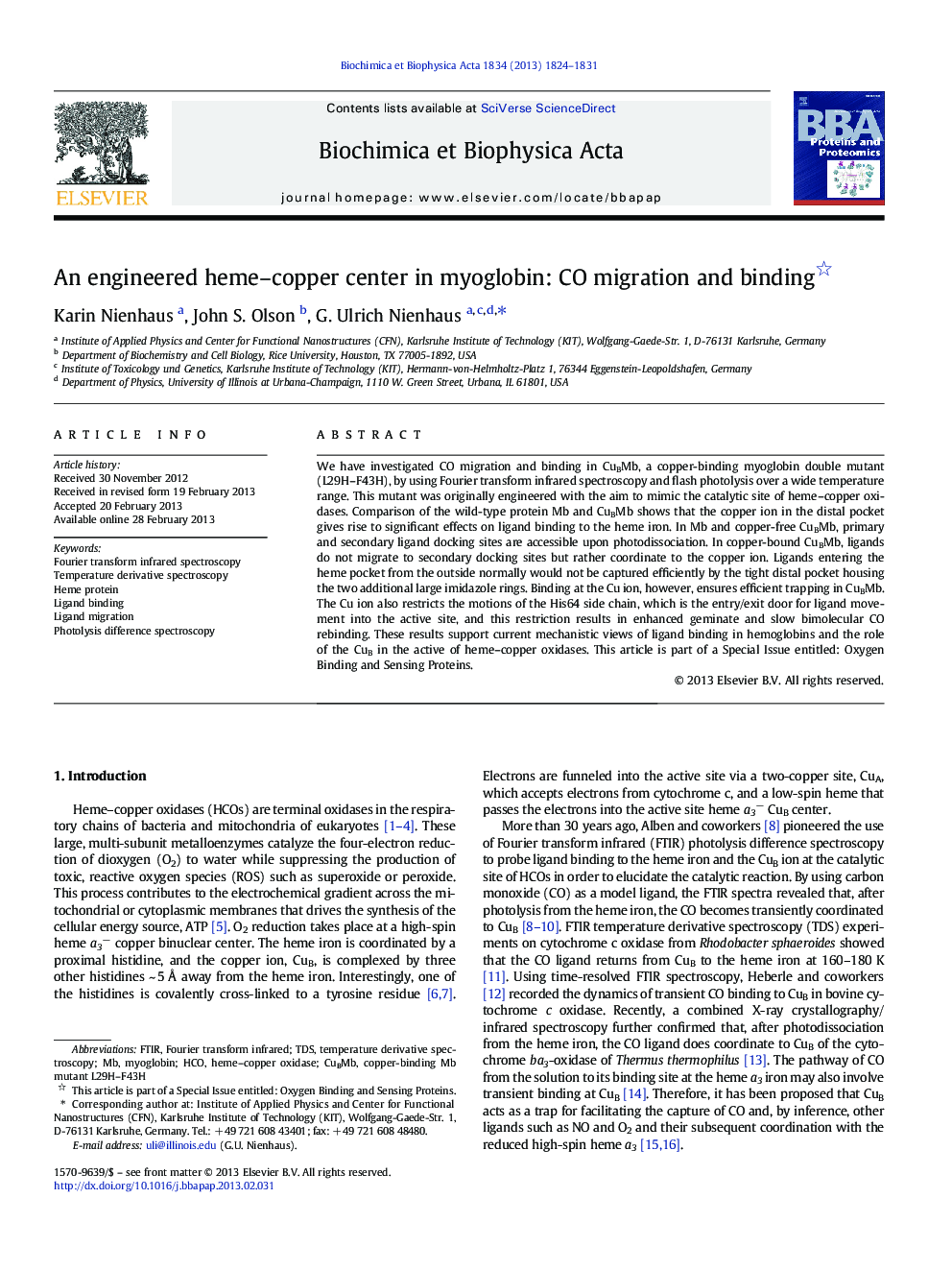| Article ID | Journal | Published Year | Pages | File Type |
|---|---|---|---|---|
| 10537267 | Biochimica et Biophysica Acta (BBA) - Proteins and Proteomics | 2013 | 8 Pages |
Abstract
We have investigated CO migration and binding in CuBMb, a copper-binding myoglobin double mutant (L29H-F43H), by using Fourier transform infrared spectroscopy and flash photolysis over a wide temperature range. This mutant was originally engineered with the aim to mimic the catalytic site of heme-copper oxidases. Comparison of the wild-type protein Mb and CuBMb shows that the copper ion in the distal pocket gives rise to significant effects on ligand binding to the heme iron. In Mb and copper-free CuBMb, primary and secondary ligand docking sites are accessible upon photodissociation. In copper-bound CuBMb, ligands do not migrate to secondary docking sites but rather coordinate to the copper ion. Ligands entering the heme pocket from the outside normally would not be captured efficiently by the tight distal pocket housing the two additional large imidazole rings. Binding at the Cu ion, however, ensures efficient trapping in CuBMb. The Cu ion also restricts the motions of the His64 side chain, which is the entry/exit door for ligand movement into the active site, and this restriction results in enhanced geminate and slow bimolecular CO rebinding. These results support current mechanistic views of ligand binding in hemoglobins and the role of the CuB in the active of heme-copper oxidases. This article is part of a Special Issue entitled: Oxygen Binding and Sensing Proteins.
Keywords
Related Topics
Physical Sciences and Engineering
Chemistry
Analytical Chemistry
Authors
Karin Nienhaus, John S. Olson, G. Ulrich Nienhaus,
